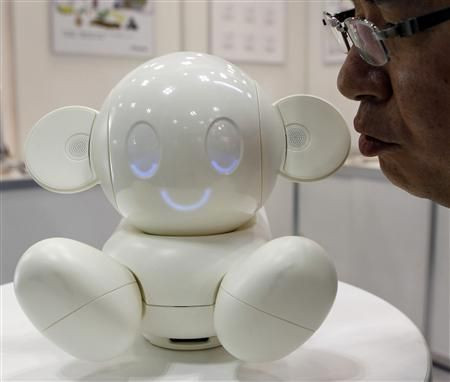South Koreans turn to robot-teachers for English instruction

South Korea's obsession with teaching its children English in order to make them globally competitive is well known. Now, it has combined this with its high tech expertise to launch one of the most innovative experiments in education ever. As part of a government sponsored project, close to 30 robot teachers have started teaching youngsters English in 19 elementary schools in the city of Daegu.
If successful, the 4-month pilot project, in which the government has invested around US$1.39 million, could see the government expanding its 'R-learning' program to place robotic teaching assistants in 8400 pre-schools and kindergartens by 2013.
Each 3.3 feet tall robot, developed by the famous Korea Institute of Science and Technology, wheels around the classroom conversing with students in English, reading books to them and dancing to music. Called Engkey (short for English jockey), it has a TV display panel for a face which flashes the 'avatar face' of a Caucasian woman and communicates the instructions and responses (and even facial expressions) of an English teacher in a remote location - in this case, Philippines - who can actually see and hear the students. The robots are now being tested and developers say that they will work on improving their teaching ability till it matches that of humans.
South Korea has long imported native English-speaking teachers to supplement the efforts of accredited local teachers teaching English. According to a Time magazine report, demand for English training has seen more than 20,000 foreigners coming to Korea each year to teach. They work in public schools and private academies, teaching the language of global business. However, of late budget constraints have forced the government to seek alternatives, especially as many visiting teachers are unwilling to relocate to the rural and remote parts of the country.
The robots, cute and effective, have met with positive response not just from pre-schoolers and elementary school students, but also some adults trying to learn the foreign language, who feel less inhibited speaking to and learning from the machines, rather than a flesh-and-blood English teacher. However, ease of use and affordability may pose serious hurdles to these being employed as full time teaching assistants in schools.
Apart from such tele-presence bots, KIST has also worked on robot instructors that are completely automated and use speech recognition software to teach students the English language and pronunciation. However, these can only help students practice pre-programmed scripted conversations.
© Copyright IBTimes 2024. All rights reserved.





















